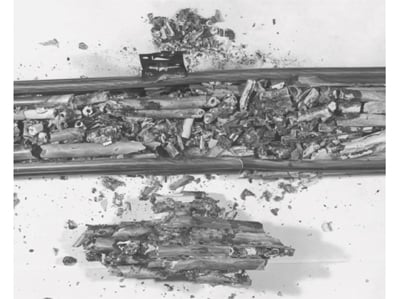Riverkeeper Files Enforcement Petition Against Indian Point

View more images on our Flickr site
FOR IMMEDIATE RELEASE:
Contact: Riverkeeper, Tina Posterli, 914-478-4501 x 239, [email protected]
Technical Information, Mark Leyse, 646-623-6835
Nuclear Fuel Rods Too Hot To Avoid Catastrophic Meltdown in the Event of an Accident
March 28, 2011 – Riverkeeper filed an enforcement petition with the Nuclear Regulatory Commission (“NRC”) today, requesting that the federal regulator order Entergy, the owner of the Indian Point nuclear power plant, to reduce the power levels of both Unit 2 and Unit 3 reactors, to reduce the risk of a catastrophic meltdown in a reactor accident. The petition cites certified laboratory studies indicating that power levels at the reactors are too high: if there were a loss-of-coolant accident, there could be runaway oxidation of the Zircaloy fuel rods, substantially increasing fuel rod temperatures and leading to a catastrophic meltdown, with the potential to release radiation to the environment.
The fuel rods in Indian Point’s reactors are zirconium alloy (Zircaloy) tubes that contain cylindrical uranium-dioxide fuel pellets. If a loss-of-coolant accident occurred at Indian Point, the pressurized core would partly or almost completely lose water and the temperature of the Zircaloy fuel rods in the core would substantially increase: for Unit 2 and Unit 3, the predicted maximum temperatures the fuel rods would reach is 1937°F and 1961°F, respectively. It is predicted that Unit 2 and Unit 3’s emergency core cooling systems (which inject water into the core) would prevent meltdowns. However, there is experimental data, not considered in Entergy’s predictions, that demonstrates if the fuel rods were to reach temperatures as low as 1832°F, it is probable that their Zircaloy content would begin to rapidly oxidize, like a fire: the heat generated by the oxidation reaction would accelerate the oxidation rate, producing yet more heat and so on (an exothermic reaction termed “runaway oxidation”). If runaway oxidation occurred at either reactor, there would be a rapid local fuel rod temperature increase (up to above 3000°F within about 60 seconds) that would lead to a partial or complete meltdown.
Mark Leyse, who researched and wrote Riverkeeper’s enforcement petition said, “The current tests that simulate how the fuel rods are supposed to cool down in a loss-of-coolant accident that Entergy relies on are not conducted with zirconium alloy fuel rods–the actual type of fuel rods used in reactors. Those tests are conducted with metals that do not burn as much as zirconium alloy: that is like conducting crash tests with crash-resistant materials not used in actual cars.”
In order to provide necessary margins of safety, Riverkeeper’s enforcement petition requests that NRC order Entergy to reduce the power levels of Indian Point Unit 2 and Unit 3. This would be done by decreasing the licensing basis maximum fuel rod temperatures of Indian Point Unit 2 and Unit 3 to temperatures lower than 1832°F.
“The NRC must immediately require Entergy to lower the fuel temperature in its reactors, in order to fully protect public health and safety, said Phillip Musegaas, Hudson River Program Director for Riverkeeper. “On the 31st anniversary of Three Mile Island, it is truly shocking that NRC would allow Indian Point to operate any other way.”
2.206 Enforcement Petition – Request to Lower LBPCT of Indian Point Units 2 and 3 (pdf 3MB)

